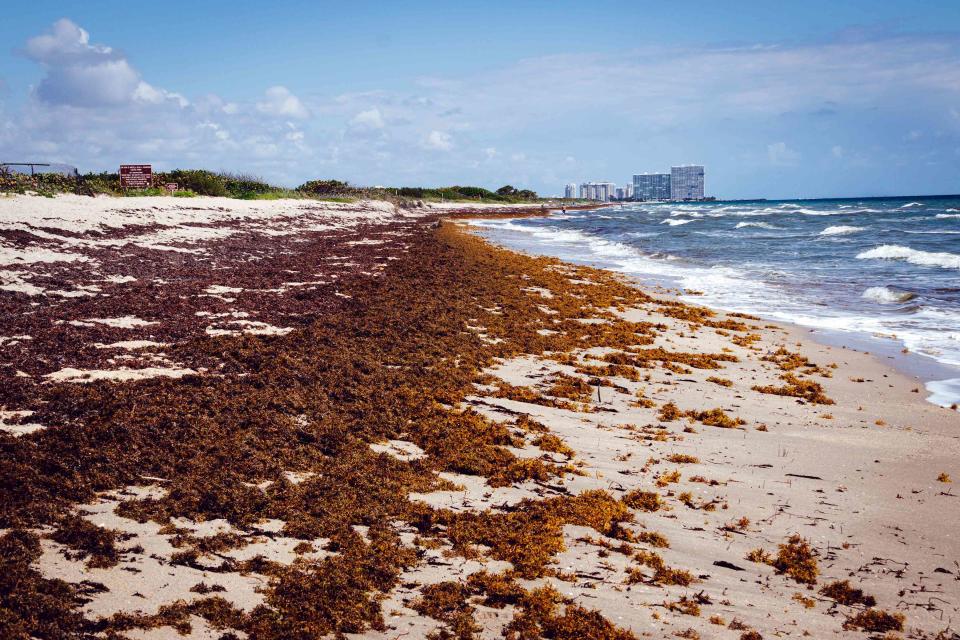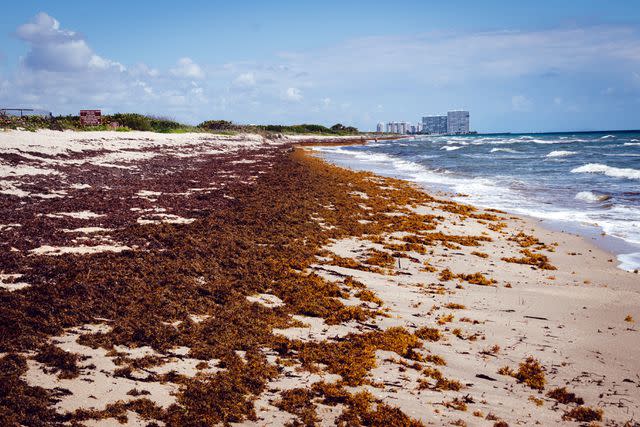Hulking Patch Of Stinky Seaweed Begins Coming Ashore In Florida
At 5,000 miles wide, this year’s sargassum bloom is believed to be the largest in history.

Julie Deshaies/Getty Images
Well folks, the giant, stinking patch of seaweed that’s been threatening Florida’s east coast has made landfall in the Sunshine State.
Recent aerial footage shows large piles of rotting sargassum encroaching on the Keys, drifting amongst docks and washing ashore on Cocoplum Beach in Marathon.

Julie Deshaies/Getty Images
Unlike the toxic algae blooms that have plagued the state in the past, sargassum is not harmful to humans. But the Florida Health Department warns that tiny creatures living in it (like jellyfish larvae) can produce rashes and blisters on contact. Furthermore, people are advised never to eat seaweed because it may contain heavy metals such as arsenic and cadmium.
We won’t even get into the rotten egg smell…
At 5,000 miles wide, this year’s sargassum bloom—known as The Great Atlantic Sargassum Belt—is believed to be the largest in history. According to University of South Florida (USF) scientists, the sargassum patch doubled in size for the second consecutive month in January, reaching 8.7 million tons and breaking the previous January record of 6.5 million tons set in 2018. The current patch contained about 13 million tons of seaweed in March.
And it’s not waiting around. According to the Sargassum Monitoring Unit, the seaweed is washing up on Florida beaches earlier than expected.
“It’s already created a lot of problems for local people for tourism, for the economy, for corals, for coral reefs, for seagrass, turtles, and for people,” Dr. Chuanmin Hu, a professor of Oceanography at the University of South Florida, told ABC Action News.
In the right amounts, sargassum is essential for marine life. But too much can cause environmental, ecological, and economic problems. Thick mats of it make it hard for sea creatures to move and breathe, and when it dries, sargassum releases hydrogen sulfide gas, which smells like rotten eggs. It's also an eyesore.
“Our beach could literally be clean at 8 a.m. and three to four hours later a giant mat of sargassum the size of a mall will come in like the blob, like a Stephen King movie,” Tom Mahady, city of Boynton Beach Ocean Rescue chief, told USA Today. "It's not pleasant for swimmers."
For more information visit sargassummonitoring.com.
For more Southern Living news, make sure to sign up for our newsletter!
Read the original article on Southern Living.

